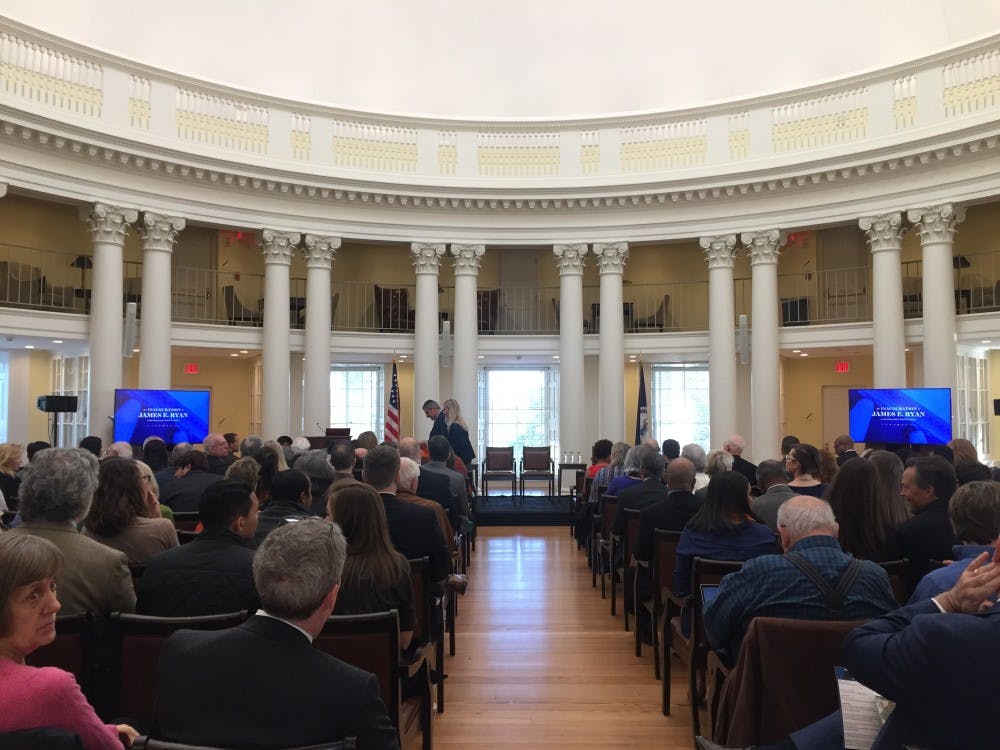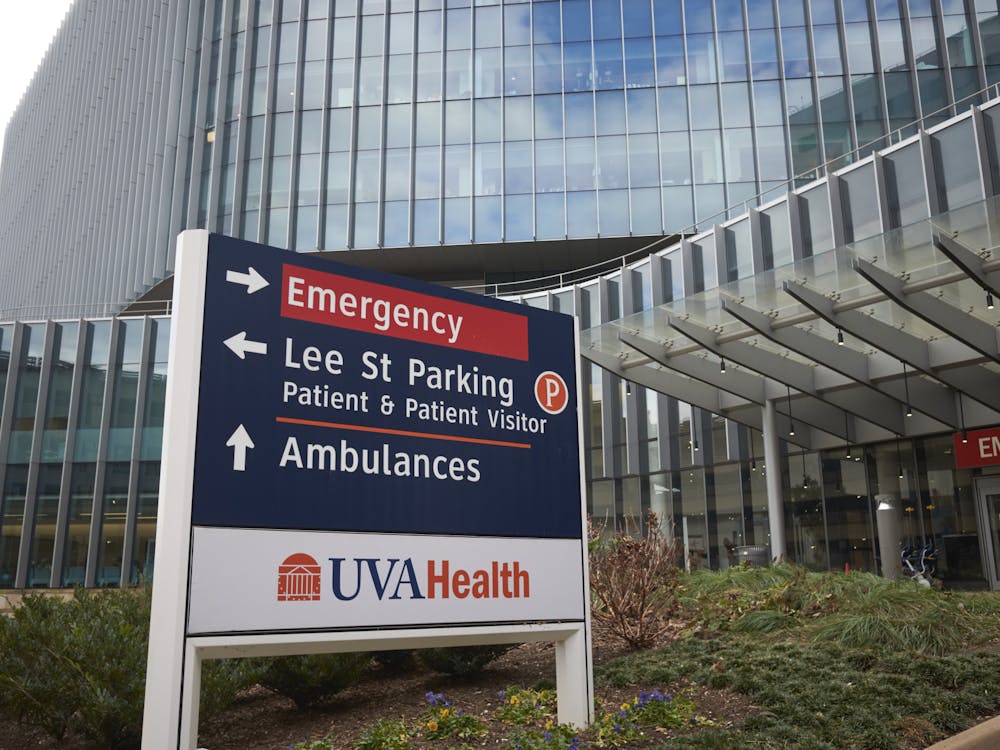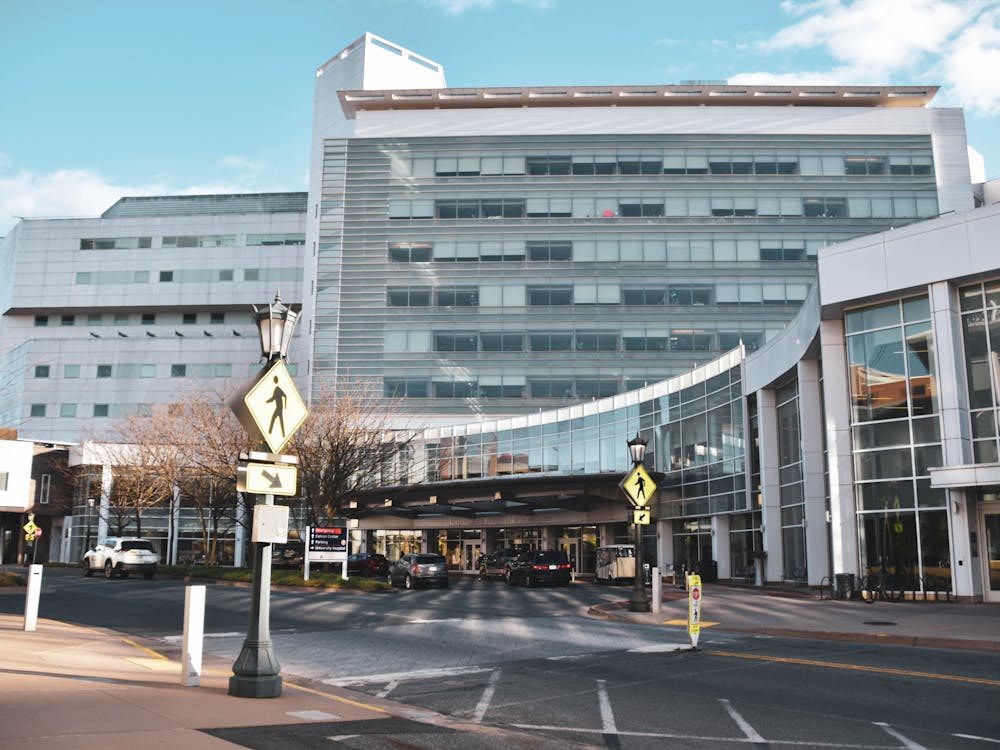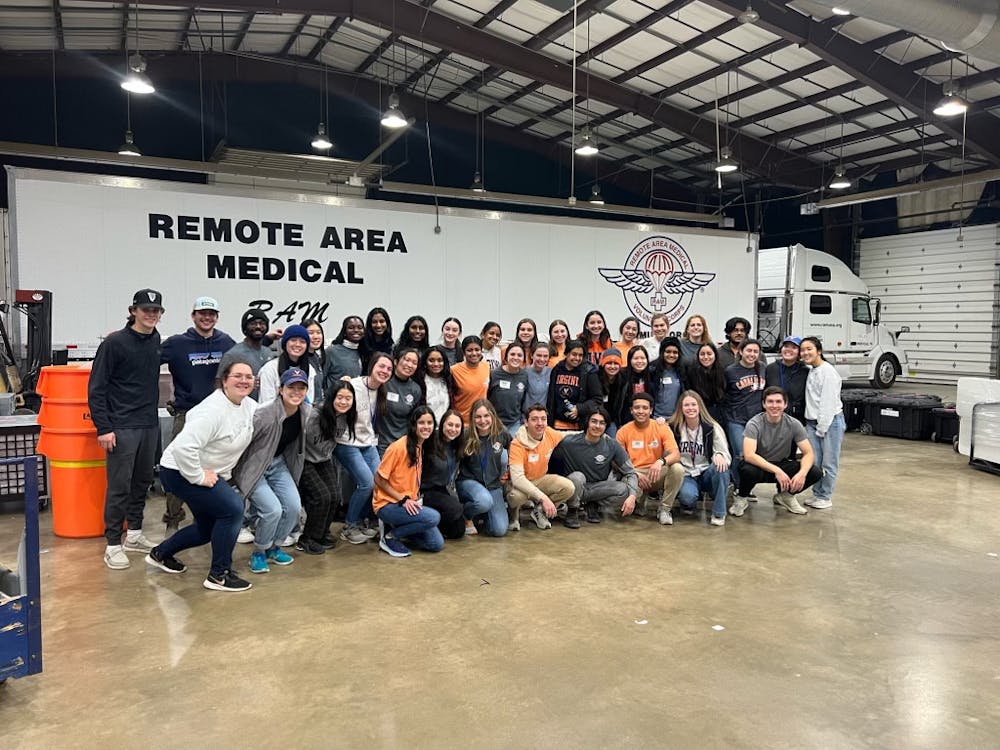As part of the University’s celebrations for the inauguration of its ninth president, the Profiles of Discovery event last Friday featured the scientific research pursuits of five University faculty members in the “Spotlight on Research Excellence at UVA” presentations. The event, organized by staff and faculty in the Office of the Vice President for Research, was held in the Rotunda Dome Room, with President Jim Ryan in attendance.
In addition to the “Spotlight on Research Excellence at UVA” presentations, Profiles of Discovery also featured education researchers in the “Integrated Practices: Excellence in Research and Teaching” panel and political science initiatives in the “Democracy and Citizenship” panel discussion.
Prior to the event, the Discovery Video Showcase displayed videos created by University researchers within various disciplines that briefly outlined their work.
Moderator Babur Lateef, a Board of Visitors member and opthamologist, opened the presentations, which included five brief keynote talks. Babur introduced the five speakers — Assoc. Astronomy Prof. Kelsey Johnson, Neuroscience Prof. Jianhua “J.C.” Cang, Medicine Prof. William Petri Jr., Asst. Electrical and Computer Engineering Prof. Homa Alemzadeh and Ophthalmology Prof. Jayakrishna Ambati — and informed that, while unplanned, the theme of sight or vision connects all five presentations.
“Our speakers will talk about how we see our universe, how we see accidents before they happen in robotic surgery, how we see the connection between infectious disease and malnutrition, how we see the importance of visual cues in brain self-assembly of neurocircuits early in life and how we are attempting to build our research methods related to preventing vision loss due to macular degeneration,” Babur said.
Johnson’s talk, titled “Unsolved Mysteries in the Universe,” had a particular focus on her work with globular clusters, compact spherical collections of ancient stars. Since globular clusters are almost as old as the universe itself, visualizing these groups of stars would allow humans to better understand the galaxy from 12 billion years ago. Humans are not able to see globular clusters in the visible light spectrum, so Johnson and colleagues utilized the Atacama Large Millimeter/submillimeter Array telescope located in the Atacama Desert in Chile to look into the dark universe.
Johnson is also the director of the Dark Skies, Bright Kids non-profit program, which takes advantage of Charlottesville’s dark night skies to inspire scientific interest in elementary school students.
Cang, a recent recruit from Northwestern University through the Jefferson Scholars Foundation Chaired Professorship Program, spoke next on his research on the brain — specifically, the neural basis of vision.
Cang compared human brain development to the assembly of IKEA furniture when regarding the neural circuits established from childhood to adulthood. Just as a mismatch in parts leads to faulty IKEA furniture, a neurobiological cellular mismatch at an early age can carry on into adulthood — leading to abnormal development in vision. Cang’s lab utilizes mice models to study how neurons in the brain respond to visual stimuli and through which neural circuits these processes occur.
The third keynote speaker, Petri, highlighted the importance of prevention in infectious diseases. According to Petri, of the people living with HIV in Virginia, only 30 percent are under proper medical treatment. In part of his talk, he noted that PositiveLinks — a mobile application created by Rebecca Dillingham, an associate professor of medicine in the Division of Infectious Diseases and International Health at the University — offers personalized patient reminders and communication with healthcare providers, working to increase the proportion of people receiving treatment for HIV.
Petri’s talk also featured the University’s Global Infectious Diseases Institute, which is currently developing a vaccine to treat sporozoite-induced diseases — diseases carried by a mobile parasite — in poor populations in countries such as Bangladesh.
Alemzadeh presented her research on creating an operating robot to improve surgical accuracy and safety. The robot is not yet autonomous, requiring surgeon control of joystick-like manipulators to move the robotic arm, and is currently used in more than 10 procedures per week in various surgical specialties in the University hospital.
“It has already enabled new kinds of procedures that was not possible before,” Alemzadeh said. “It has reduced the time of hospital stay for patients by reducing the number of complications.”
The final speaker, Ambati, conducts research on macular degeneration, the distortion or loss of vision due to retinal decay. Ambati and his lab discovered that an excess of a toxic substance called Alu activates a part of the immune system called the inflammasome, which ultimately leads to the degeneration of the retina. Since Alu and the HIV virus replicate themselves in similar ways, Ambati realized the same drugs used to treat HIV could be used for macular degeneration.
“This serendipitous discovery has now brought us to the cusp of potentially preventing blindness in millions across the world,” Ambati said. “Even more exciting, the very same inflammasome has been shown to promote many other diseases, including Alzheimer’s, atherosclerosis, diabetes and arthritis.”
Additionally, inspired by macular degeneration progress, Ambati and colleagues are currently using big data to repurpose drugs in order to treat various other diseases.
“After listening to the session, you will agree with me that U.Va. is well-poised to making the world a better place for discovery in all its forms,” said Melur Ramasubramanian, vice president for research and professor of mechanical and aerospace engineering.





